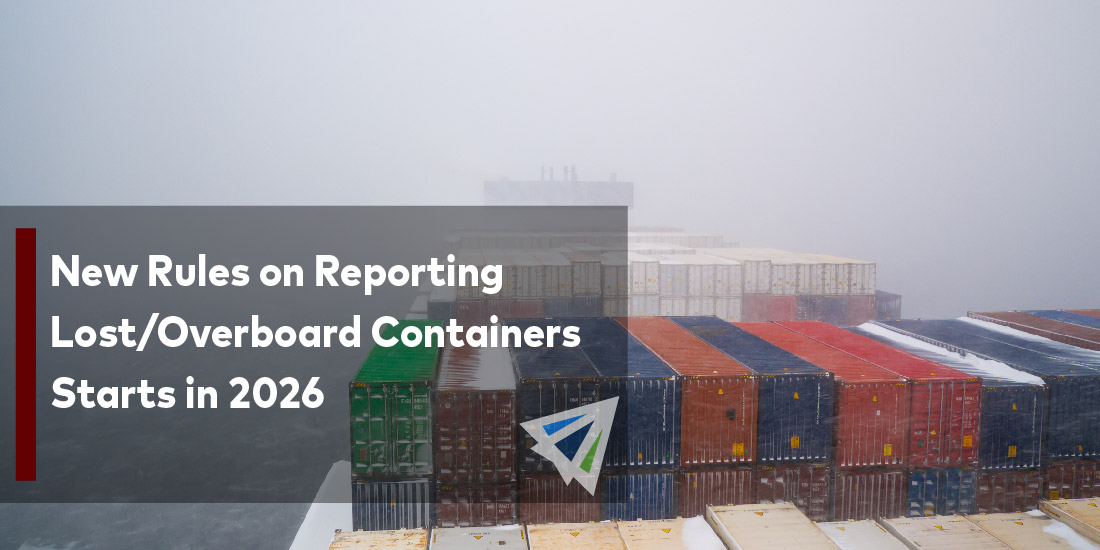The International Maritime Organization (IMO) announced new regulations on reporting lost/overboard shipping containers, which will start at the beginning of 2026.
The occurrence for lost/overboard containers is rather rare, but it still happens. Back in 2022, a report by the World Shipping Council showed 661 containers were lost overboard during the year. In other words, of the 250 million containers transported in 2022, only 0.00048% were lost at sea.
Data for 2023 has not yet been released by the World Shipping Council but is expected to in the next few weeks, per their website.
In this blog we’ll discuss what this new ruling means for reporting lost/overboard containers, and what are the causes for ocean containers getting lost/overboard at sea.
What This Ruling Means
In essence, any containers lost at sea will be required to be reported.
However, more specifically, according to the World Shipping Council, key provisions for Regulation 31– Reporting by the Master of the Ship include:
- The Master of a ship involved in the loss of containers must immediately and thoroughly report specific details to nearby ships, the nearest coastal state, and the flag State.
- The flag State will then pass this information to the IMO via a new module in the Global Integrated Shipping Information System (GISIS).
- If Masters of the ships see containers drifting they must report it to nearby ships and the nearest coastal state.
There’s also additional key provisions for Regulation 32 – Reporting Details (involving containers lost at sea) include:
- Reports must be made as soon as possible, and when more information becomes available additional updates need to be reported.
- After a thorough inspection occurs, a confirmation of the final number of lost containers must be take place.
- Mandatory details include the position of the lost containers, the total number lost, and if any contained dangerous goods. Additional descriptive information is required if possible.
- Masters can also share voluntary details about the cargo, sea conditions, and more.
Key provisions for Regulation 32 – Reporting Details (for drifting containers observed):
- The total number of containers spotted drifting and their position must be included in the reports.
- Additional voluntary details similar to those for lost containers can be provided if available.
The World Shipping Council says these new rulings are an effort to improve maritime safety and environmental protection. They go into effect January 1st, 2026.
What are the Causes for Ocean Containers Getting Lost at Sea?
When overboard/lost containers at sea occur, it’s typically not just one singular cause, but more likely several factors that could be of cause. Some of those factors, noted by the World Shipping Council, could be weather conditions, the design of the ship, propulsion issues, and how containers are lashed together.
Weather – While extreme weather can be somewhat predicted via forecasts, high winds and rough seas can cause containers to be tipped overboard or even damaged, if they are not properly secured.
Improper loading/not correctly lashed – If the containers on the ships are not loaded properly or lashed, this can create instability and cause the containers to shift or topple during transit, resulting in loss overboard.
Looking Ahead
To wrap up the blog, the issue of lost/overboard containers at sea is an interesting and complex challenge with potential environmental, economic, and safety implications. The “good” news is lost/overboard containers is a rather rare occurrence, as we noted above. Nevertheless, increased awareness and innovative solutions can offer hope for minimizing the impact of container loss.
Should you have any questions regarding this, please reach out to our team today.
Additionally, we have our weekly market updates that can provide you with relevant freight news, updates, developments across the industry, and more.
